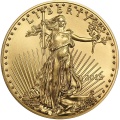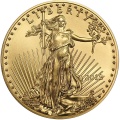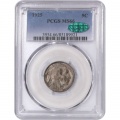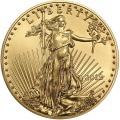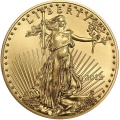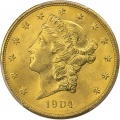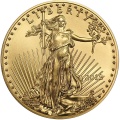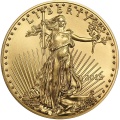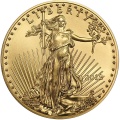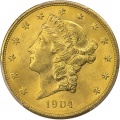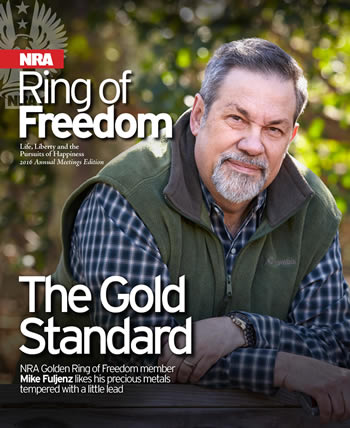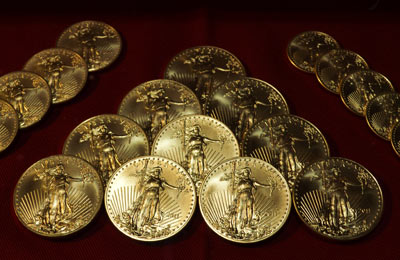April 2020 - Week 4 Edition
Bank of America Sees $3,000 Gold – a Huge (50%) Increase from their Previous Forecast
Last year, a unit of Bank of America (BankAmerica Securities) recommended that investors hold a 25% position in gold. Last week Bank of America commodity analysts said that gold’s momentum could drive gold to a new all-time high this year and then push prices to $3,000 next year – a 50% increase from its previous forecast of a $2,000 high next year. B-of-A analysts wrote: “As economic output contracts sharply, fiscal outlays surge, and central bank balance sheets double, fiat currencies could come under pressure. And investors will aim for gold.” After pointing out that the Federal Reserve recently boosted its balance sheet by 50% to $6.42 trillion in just over a month, these analysts said, the Fed “can’t print gold.”
B-of-A added that “financial repression is back on an extraordinary scale. Rates in the U.S. and most G-10 economies will likely be at or below zero for a very long period of time as central banks attempt to push inflation back above their targets.” Politically, “a lot of risks could effectively be socialized, boosting the appeal of gold.”
The beginning of past rare coin bull markets often included bullish predictions and gold portfolio recommendations from mainstream financial institutions like these. These bull markets are usually accompanied by more advertisements by major coin dealers for bullion coin products and a better new-customer response to those advertisements. Many of those new customers are then introduced to rare coins by dealers. This often leads (usually within 6 to 24 months) to a rare coin bull market. Most major rare coin bull markets since the 1970s – with price increases of 100% to 1000% – have generally followed active or rising gold and silver bullion markets.
Since rare coins have a far more limited population than bullion coins, they tend to outperform bullion over time. Lately, we have found that quality coins with low population are being snapped up at higher prices than six months ago. Customers must be ready to quickly purchase these high-demand coins – you’re either a “fast rabbit” or a “dead rabbit” as I’ve said before. If you wait too long, somebody else may buy the few available specimens. Historically important and low population coins with eye appeal are strong and popular now, so please contact your account representatives to be sure you are informed when your desired coin selections become available. Remember, be the “fast rabbit.”
Call your friendly neighborhood account representative!
Gold is the Leader of the Pack
Gold reached $1,730 last Friday but fell to $1,715 Monday, April 27. This week, gold may rally further as the U.S. Federal Reserve and the European Central Bank are scheduled to announce major policy decisions — the Fed meets on Wednesday and the ECB on Thursday. (Note: With April ending this Thursday, we’ll bring you the four-month year-to-date performance totals next week. So far, gold is leading the pack, up 14%, vs. double-digit declines for other commodities and stocks. We’ll also bring you the total sales results for U.S. Mint bullion products through April 30 in next week’s edition. The Mint has already shut down twice due to COVID-19 and the supply chain for silver and gold blanks is also affected by the virus.)
Runaway Fed Liquidity and Congressional Deficits Will Eventually Fuel Rising Inflation
When the Federal Open Market Committee (FOMC) meets this Tuesday and Wednesday, they will likely announce more quantitative easing (QE), amounting to new monetary stimulus plans, which are generally favorable for precious metals prices. In today’s generally deflationary environment (with oil and most other commodities falling in price), the Fed doesn’t fear rising inflation, so they keep printing money.
In addition to the Federal Reserve’s monetary easing, the U.S. Congress is running up record deficits in a series of bailout packages. The federal deficit in Fiscal Year 2020 is sure to reach $3 trillion (and maybe $4 trillion). As of April 15, according to Former Sen. Phil Gramm, who served as chairman of the Senate Banking Committee, and Michael Solon, partner of U.S. Policy Metrics, “new spending commitments already equal almost twice the gross domestic product loss incurred in the 2008 recession, and 20% more than all private wages and salaries paid in the last quarter of 2019. Yet only a sliver of the money has reached the intended beneficiaries” (“Will Congress Help or Crush U.S. Recovery?” April 15 Wall Street Journal).
In the average postwar year (1945 to 2019), Gramm and Solon wrote, the federal government borrowed 2.1% of GDP each year. This year, the federal government will borrow 20.6% of GDP – or 10 times the average. That’s more than all private investment expenditures in 2019, and three times the previous high.
Inflation will not be an immediate problem, but the Fed and Congress are sowing the seeds of a future inflation similar to what the Founding Fathers faced in the American Revolution, when they financed the army with paper “Continentals.” For a year or two, there was no inflation and those paper (more like cardboard) promises helped feed and arm the Patriots, but by the late 1770s, General George Washington complained to the Continental Congress that “a wagonload of Continentals won’t buy a wagonload of provisions.” Once our economy recovers, in 2021, we can expect rising inflation and soaring gold prices.

Important Disclosure Notification: All statements, opinions, pricing, and ideas herein are believed to be reliable, truthful and accurate to the best of the Publisher's knowledge at this time. They are not guaranteed in any way by anybody and are subject to change over time. The Publisher disclaims and is not liable for any claims or losses which may be incurred by third parties while relying on information published herein. Individuals should not look at this publication as giving finance or investment advice or information for their individual suitability. All readers are advised to independently verify all representations made herein or by its representatives for your individual suitability before making your investment or collecting decisions. Arbitration: This company strives to handle customer complaint issues directly with customer in an expeditious manner. In the event an amicable resolution cannot be reached, you agree to accept binding arbitration. Any dispute, controversy, claim or disagreement arising out of or relating to transactions between you and this company shall be resolved by binding arbitration pursuant to the Federal Arbitration Act and conducted in Beaumont, Jefferson County, Texas. It is understood that the parties waive any right to a jury trial. Judgment upon the award rendered by the Arbitrator may be entered in any court having jurisdiction thereof. Reproduction or quotation of this newsletter is prohibited without written permission of the Publisher.

